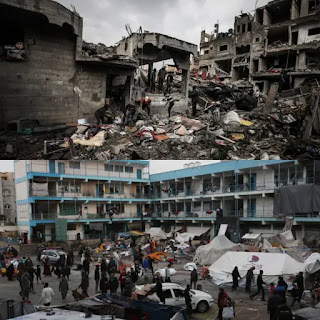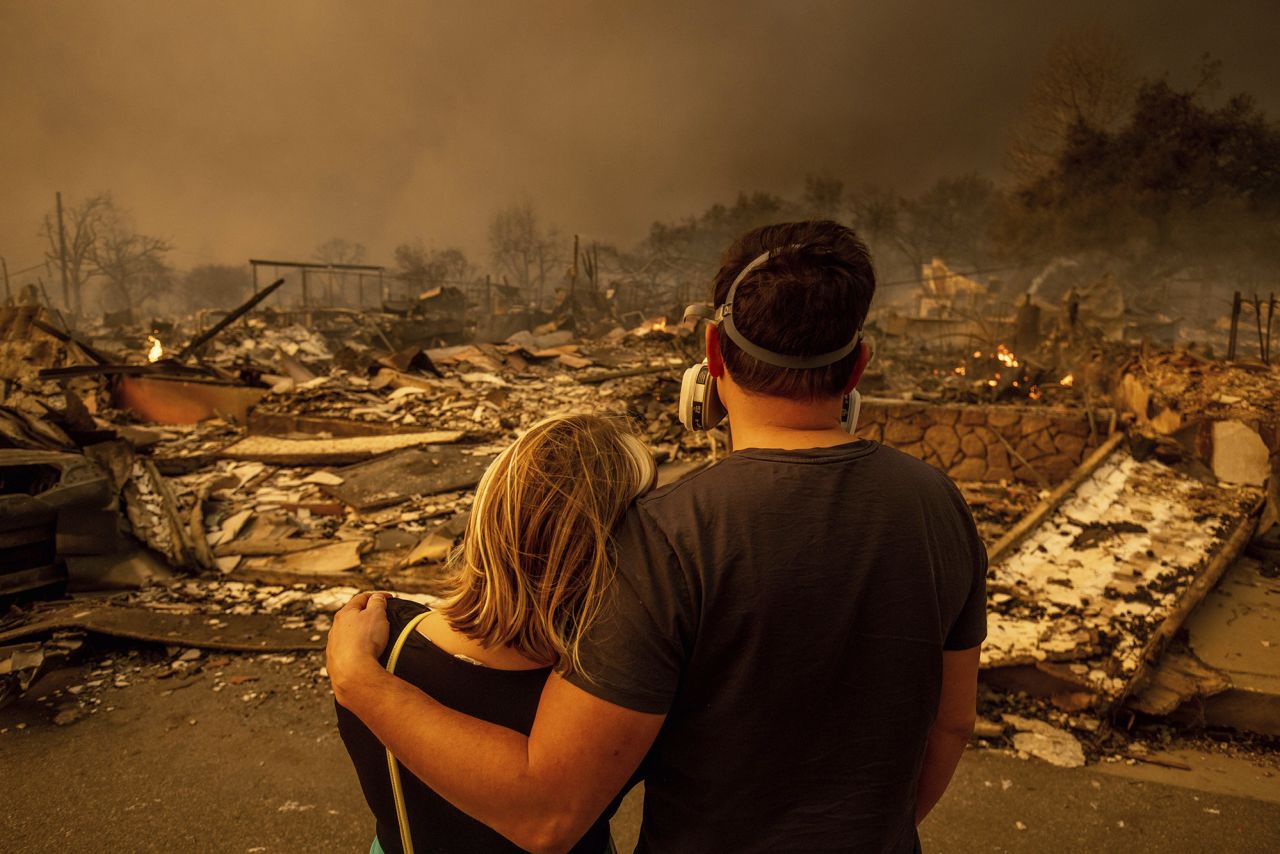ARTICLE AD BOX
The tactics of armed faction members witnessed a clear improvement, benefiting from lessons from the pre-truce phase, by improving the implementation of combat operations and avoiding weak points.
On October 7, the Palestinian resistance factions in the Gaza Strip, led by the Al-Qassam Brigades, carried out a qualitative and pre-emptive attack on several settlements and military sites in the Gaza Strip, with a missile strike exceeding 5,000 missiles in the first 20 minutes of the operation.
The operation led to the Israeli army declaring a state of war and carrying out intensive air strikes and violent air and sea bombardment. On October 27, the Israeli forces began a comprehensive ground operation and incursions into many combat areas.
In fighting with the military units of the Israeli enemy, the Palestinian resistance used combat tactics and methods represented by the complete or partial destruction of military vehicles, which led to the killing and wounding of dozens of Zionist soldiers. The invading forces were also targeted and clashed with them from close distances with missiles, and sometimes from zero distance using anti-fortified missiles. Or against individuals, and sometimes their rescue teams are targeted through combined operations. Some tunnels and homes are booby-trapped and blown up by the occupation soldiers.
In addition to high-quality, professional sniping operations against enemy soldiers, field command headquarters of the Israeli forces are repeatedly bombed, and military concentrations are bombed with mortar shells, especially heavy-caliber 120 mm, and short-range “Rajum 114” missiles in the various fighting axes in the Gaza Strip.
The city of Tel Aviv in the center of the entity and some cities, communities, camps and settlements on the Gaza Strip are also being targeted with effective missile barrages, which have influential political and military implications.
Qassam tactics after the truce
The tactics of members of the armed factions witnessed a clear improvement, benefiting from lessons from the pre-truce phase, by improving the implementation of combat operations and avoiding weak points. The humanitarian truce provided time for the armed factions to organize their forces and redeploy, and improve their positions by restoring and equipping the main defensive sites, and compensating for the shortage of ammunition. And restoration of tunnel networks.
Based on studying the potential and most dangerous threat to all combat axes, carrying out reconnaissance and surveillance, and continuing to collect intelligence information about the Israeli enemy’s concentrations, distributions, activities, and positioning of its forces, plans were prepared for ambush operations, and dragging the Israeli army into selected killing zones by placing various types of bombs, barrel bombs, Television, thunder, and strobe bombs.
Hamas and the armed factions also developed fighting methods by carrying out specific operations behind the occupation lines, as is the case in the Juhr al-Dik area, dragging members of the Israeli forces to the entrances of the tunnels and blowing them up, killing and wounding many officers and soldiers, and using snipers effectively, especially with the expansion of the Israeli forces’ incursion into built-up areas. .
The resistance elements continued to carry out combat operations through small groups, which were able to carry out complex operations that surprised and surprised the Israeli occupation units by attacking and targeting members of its combat units and inflicting heavy losses on them, and as soon as the rescue forces arrived, surprising them, attacking them and inflicting losses on them.
The Al-Qassam Brigades and the Palestinian factions demonstrated superior skills in media warfare and psychological operations, through documentation, credibility, balance, and not exaggerating the transfer of losses and broadcasting them with convincing and influential clips to the international community and inside Israel with great ability.
The good treatment of the prisoners who were released during the humanitarian truce reflected a civilized and highly competent image of the resistance factions in their methods of treatment, professionalism, and skills in carrying out their duties.
In this context, the Al-Qassam Brigades and the Palestinian armed factions succeeded in completely or partially destroying a total of 721 tanks and vehicles since the start of ground operations on October 27 until the 75th day of operations. These are the highest losses in the history of combat operations with the Zionist entity. The percentage of destruction reflects skill. Excellent use of anti-armor weapons, high efficiency and skills in shooting at stationary and moving targets from various distances and from zero distance.
Where is the war headed?
The United States and Israel are seeking to crush the Palestinian resistance in light of the silence of some countries in the region, and another desire to end the Hamas movement and to eliminate any extension of Islamic movements in the region.
What terrifies Israel is the large losses suffered by its military forces, including the large numbers of dead and wounded, the destruction of equipment and machinery, the deterioration of the security and economic conditions in the entity, the erosion of the Israeli theory of deterrence, and the impact on the morale of civil society and the Israeli army.
Israel plans to move to the next phase of less intense and less intense combat operations, in order to reduce its losses and maintain pressure and siege to stifle the Hamas movement.
Most likely, the next stage will witness a continuation of resistance activities at a less severe level, leading to a transitional stage. Events may witness important and decisive turns based on the ability of the Hamas movement to withstand versus Israel’s ability to continue to bear losses.
In this context, Israel plans to establish a buffer border security zone under the control of the Israeli army along the Gaza envelope from the Palestinian side. Israel also seeks to strip the resistance of its weapons, continue to impose a siege on Hamas and the armed Palestinian factions, and reassign the Palestinian Authority in Ramallah to arrange the administration of Future affairs of Gaza.
It is difficult to predict the shape of operations of the Al-Qassam Brigades and its affiliated armed factions in the future, because the variables of the operational environment are somewhat unclear, especially political, military and security. The most important thing is the developments in the current situation, and the most important question is: who fails and who wins militarily?
If Hamas wins, the spirit of resistance and jihad will return with new strength and vigor, and there will be a shift towards widespread covert action, especially in the West Bank, to form armed cells and groups with the capabilities available for sustainable and comprehensive influence.
As for the Gaza Strip, without a doubt and with certainty, the path will continue and the resistance factions will work to rebuild their military structure along with the infrastructure of the Gaza Strip, but in a stronger and more precise manner, benefiting from the lessons that emerged during the Al-Aqsa Flood operations.
However, if Hamas loses, this means that the path of the Palestinian resistance may witness a stage of weakness and frustration, and it will need decades to rearrange and build its capabilities, especially since Israel will be alone in the West Bank. Hence, the future of the Palestinian resistance is directly linked to the results of the current process.
The idea of eliminating Hamas is ambitious and difficult to achieve on the ground, and what is happening in Gaza is an attempt to implement the provisions of the Deal of the Century in the face of international silence and painful Arab failure to achieve a temporary occupation of the Strip(Muhammad Ali Al-Sammadi)
The Palestinian people vote for the resistance
The latest opinion polls in the West Bank and Gaza Strip show a clear popular rally behind the option of armed resistance, despite Israel's punitive policies against the Palestinian people.
The latest opinion polls in the West Bank and Gaza Strip show a significant rise in the popularity of the Hamas movement, and a greater popular rally around the line of armed resistance. Despite the hideous massacres and massive destruction caused by the Israeli occupation in its aggression against the Gaza Strip, it has failed miserably in isolating Hamas and the forces of Resistance represents the Palestinian popular incubator.
Supporting the Battle of Al-Aqsa Flood
The poll conducted by the Palestinian Center for Policy and Survey Research in cooperation with the Konrad Adenauer Foundation, the results of which were released on December 13 and included the opinions of the public in the West Bank and Gaza Strip, showed that 72% of Palestinians believe that Hamas’s decision to attack and launch the Al-Aqsa Flood Battle on 7 Last October was right.
62% believe that Hamas will emerge victorious from this battle, and 72% expect that Hamas will succeed in returning to ruling the Gaza Strip after the war, despite Israel's declared intention to eliminate it.
This is consistent with a large majority of 73% believing that “Israel” will not succeed in causing a second Palestinian Nakba, and an overwhelming majority of 85% affirming that “Israel” will fail to displace the population of the Gaza Strip.
It is noteworthy that these results, which show high confidence in Hamas and the resistance, came in the context of a poll in which people’s opinions were taken at the height of a fierce aggression against the Gaza Strip in which “Israel”, whose army is considered among the most powerful armies in the world, allied itself with major powers, led by the United States, against resistance forces with potential. It has a very small military force compared to its enemies, and it lives in a poor, besieged environment.
These opinions were also taken after more than 15,000 Palestinians, including more than 6,000 children and 4,000 women, were martyred, 36,000 others were wounded, and about two-thirds of the population of the Gaza Strip were displaced, and at a time when 56% of the respondents in the survey from the Gaza Strip stated that they had nothing to do with it. Enough food for a day or two, and 64% of them confirm that a member of their family was killed or wounded in this war.
Between the performance of the Ramallah Authority and the performance of Hamas
According to the same poll, 60% of the Palestinian public prefer Hamas to control the Gaza Strip after the war, while 16% prefer the Palestinian Authority to control it with a national unity government, but after excluding President Mahmoud Abbas, and only 7% prefer a Palestinian Authority led by Abbas, which is a shocking percentage for the Authority. In Ramallah, and for President Abbas, as the national unity government was widely popular, and 72% of the public were satisfied with the performance of Hamas during the war on the Gaza Strip, while only 14% were satisfied with the performance of the Ramallah Authority, and were satisfied with the performance of Yahya Al-Sinwar, leader Hamas in Gaza: 69% compared to only 11% who were satisfied with Abbas’ performance.
On the other hand, 68% of the public believe that the Palestinian Authority in Ramallah has become a burden on the Palestinian people, and 58% even support the dissolution of the Palestinian Authority itself. Only a minority of 20% supports pursuing the path of peaceful negotiations in order to end the occupation, while there is a majority of 69% who support a return to the intifada and armed resistance.
There are 88% calling on Abbas to resign, and this percentage rises among the people of the West Bank, where Abbas has authority, to 92%, which indicates an overwhelming majority that no longer wants him to remain in power, a desire that was repeated in previous polls, but it has reached a high peak in this year. Poll.
Perhaps this explains what is being circulated Arab and internationally these days, that Abbas is no longer qualified to continue leading the next stage, and that an alternative must be searched for him. Some circles are even discussing the possibility of releasing the Fatah leader, Marwan Barghouti, from Israeli prisons, as he is the only one qualified. To bring together Fatah ranks in the face of the rise in Hamas's popularity.
Presidential and legislative elections
In line with the results of the poll, if presidential elections take place in a competition between Fatah President Mahmoud Abbas and Hamas President Ismail Haniyeh, Haniyeh will receive 78% of the votes compared to only 16% for Abbas, and there is no chance for Fatah to win the presidential battle unless Marwan Barghouti participates in it, as he will get 47% compared to 43% for Haniyeh and only 7% for Abbas.
If legislative elections take place, 51% will elect the Hamas (Change and Reform) list, compared to 19% who will elect the Fatah list, and all other lists will receive only 4%.
It is noted that 25% have not yet decided, and when this percentage of undecided people decide, they will most likely choose (as previously experienced) between Hamas and Fatah, which means that the chance of the Hamas list reaching a percentage of more than 60% is very high.
Perhaps this indicator, which exceeds the percentage of decisiveness, and which the Hamas movement has reached for the first time, gives a strong indication of the extent of the impact of the Al-Aqsa Flood Battle, and the extent of the popularity enjoyed by the resistance work when it takes its strong and effective form.
Wrapping around resistance
This poll shows that the ongoing Israeli aggression on the Gaza Strip has failed to break the will of the Palestinian people, and that the massacres committed against civilians and massive destruction have not been able to separate the armed resistance from its popular incubator.
The aggression also had adverse repercussions that increased the Palestinian people’s support for the resistance, the desire to sacrifice and avenge the martyrs increased, and the crimes of the occupation turned into fuel for the revolution and its continuation.
This poll reinforces the general Palestinian trend, which appeared in previous polls, which has lost hope in the path of a peaceful settlement, and has begun to see no real opportunity to achieve the “two-state solution” in light of the escalation of Israeli religious and nationalist extremism, and the expansion of Judaization and settlement programs. He believes that the only language the occupation understands is armed resistance.
This poll strongly and repeatedly raises the issue of the legitimacy of the current Palestinian leadership, which has lost the confidence of the Palestinian street, as it has become necessary to agree on a transitional leadership to prepare for real elections, to rebuild the Palestinian legislative and executive institutions on fair and sound foundations, and in a way that honestly expresses the will of the people. (Mohsen Muhammad Saleh)
.png)
 1 year ago
6
1 year ago
6









 English (US)
English (US)